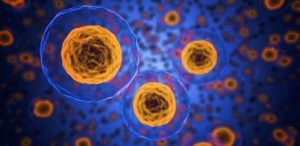
Since its launch in 1990, the Hubble Space Telescope (HST) has provided a shining array of images that have awakened and motivated the public. More than just beautiful images, dozens of terabytes of data collected have provided insights into the universe, which are closely related to objects with incredible pictures of supernova and nebula as the closest galaxies of the Moon.
Below we discover the telescope’s history and its findings, plus the Hubble facts and the orbiting of the best pictures of some observatory. First of all, we take a look at a prestigious photo. This Hubble Picture is widely recognized; It is a view of the so-called pillars of construction within the Eagle Nebula.
He initially launched binoculars with a flaw in his mirror, which obstructed the ability to do comments. This caused a lot of disruption among the scientific community, given that Hubble’s cost was $ 1.5 billion (about $ 2.87 in 2017 dollars) in 1990 dollars. But after a successful shuttle repair mission in 1993, Hubble’s reputation rose again and today it is the highest. Famous telescopes
With the completion of the last servicing mission in 2009, Hubble is in good health and is ready to continue the operation well before launching a successor observatory – James Web Space Telescope – 2020.
Hubble history: From major flaw to perfection

When Galileo first took the form of a detective in the sky in 1610, he had trouble making Saturn rings appearing in cheap binoculars in today’s time. Progress in optics improved the views of scientists about planets, stars and distant galaxies, but the Earth’s atmosphere has still blocked many lights on the ground for supervisors. Large telescopes (and still) were mounted on high mountains, where thin atmospheres allow clear images.
In 1923, German scientist Hermann Oberth suggested for the first time that a telescope can be launched in the classroom to help overcome distortions caused by the atmosphere. As soon as rocket launching became more common, this idea became possible and in 1969 a big space telescope was approved for launch. But its development took longer than the preparation of the moon’s journey.
In 1975, the European Space Agency, together with NASA, started working on the plan which would eventually become Hubble. Congress approved funds for binoculars in 1977. The birth of the reusable space shuttle provided a new mechanism for delivering this kind of telescope.
Hubble Equipment
In honour of Edwin Hubble, the name of the Large Space Telescope was changed to Hubble (HST), an American astronomer, who, among other things, determined that the universe moved ahead of the boundaries of the Milky Way. On April 24, 1990 world’s first space telescope was launched. The cost of this effort was $ 1.5 billion, but it will consistently spend – both hope and unexpected.
Initial equipment on Hubble included Wide Field Planetary Camera, Godard High-Resolution Spectrograph (GHRS), Fent Object Camera (FOC), Fent Object Spectrograph (FOS) and High-Speed Photometer. But there was a big problem with the bat. Hubble had a flawed mirror, researchers learned that when the telescope reached the orbit and it was put to work. Pictures were fuzzy – close to useless A major flaw in Hubble’s main mirror was due to a circular aberration due to a manufacturing error. The flaw was only 1/50th of the thickness of a sheet of paper.
NASA took three years to build a repair mission. On December 2, 1993, the Space Shuttle Endeavor prepared the seven-day crew to correct Hubble during the five days of the space shuttle. Two new cameras – Wide-Field Planetary Camera 2 (WFPC-2) – which later took several famous Hubble photos, were installed during fixes. In December 1993, the first new images from Hubble reached the Earth. And they were tempting.
Hubble discoveries

Hubble’s advanced approach and advanced optics allow it to look far-out on peer than previous ground-based optics. Because light takes time to travel long distances, the range of HST works like a time machine; The light seeing from the remote objects only explains how that object appeared when the light was released, and not how it appears today. Thus, when we look at the Andromeda Galaxy 2.5 million light years from Earth, we see it 2.5 million years ago.
And with Hubble, the distant objects are discovered which cannot otherwise be seen at all.
When astronomers pointed to HST on the empty patch appearing in Ears Major in 1995, for example, they captured the imagination of more than 3,000 galaxies to detect by other telescopes. (It was later called Hubble Deep Field). Some galaxies were so small, they have not yet started building serious stars. Other deep field observations were displayed in the same area, which is deep in space everywhere. He was called Hubble Ultra-Deep Field (released in 2004) and Hubble East Deep Field (released in 2012).
Hubble Early Universe discovery
In addition to gazing at the early universe, Hubble also helped astronomers find out how much time passed after the Big Bang. By finding a particular type of vibration star as a cephid variable, they could limit the age of the universe from its pre-HST boundary to more than 10 to 20 billion years for a specific 13.7 billion years.
Hubble also examines the individual stars in various stages of development – the children of dust that make the bodies of those people long after the explosion after the explosion. Even it is able to peer outside our galaxy, the Milky Way and its neighbours, the Magellanic Clouds and the Andromeda Galaxy.
Pictures of Planets
The more challenging to see that the stars are the other planets of orbiting the Sun. Nevertheless, in 2008, Hubble captured pictures of Fomalhaut b planet, for the first time when an extrasolar planet was directly imaged in visual light. But most of the planets are more challenging for photography. Most of HST’s work with other planets comes through the detection of their environment because they pass in front of their sun; The atmosphere filters the light from the stars and records the Hubble changes.
Hubble can spend most of his time in the light-year period of the earth, but on this occasion, it takes time to take pictures of planets that move around our sun. Higher resolution images are taken from Jupiter, Saturn, and even Pluto can provide insights, which can be only by topping the planets orbiting planets. Images of HST allow scientists on Earth to monitor changes in the planet’s atmosphere and surface. When Comet Shoemaker-Levi crashed in Jupiter in 1994, Hubble took a picture of a deadly collision. Later, a lot of gas was discovered about the atmosphere.
In addition, Hubble saw that Moon Europe appears to be the plum of water coming from Jupiter’s moon. The telescope did an initial observation in March 2014 and then in February 2016 saw a follow-up candidate plum in the same place.
In the classroom for more than two decades, Hubble has given scientists more understanding of the planets, galaxies and the entire universe. Among the most amazing Hubble searches and research projects:
• Discovering Nix and Hydra, two moons of Pluto.
• Helping determine the rate of the universe’s expansion.
• Discovered that almost every major galaxy is immobile by a black hole.
• Helping refine the age of the universe.



